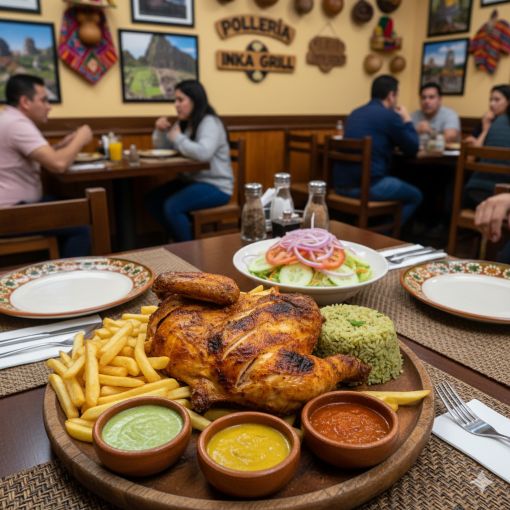Specialization
The name "Peruvian Charcoal Chicken & Grill" itself implies a focused menu centered on a primary offering.
Foundational Analysis and Strategic Gap Identification

Peruvian Charcoal Chicken is a culinary product of significant renown, representing a cornerstone of Peruvian gastronomy. This report provides a foundational analysis and gap identification based on preliminary data, seeking to deconstruct the core elements that define this dish and the business model that supports it. A strategic understanding of its components is essential to appreciating its distinct position in the global culinary landscape.
Based on the available source context, a foundational distinction must be made: "Peruvian Charcoal Chicken" refers to the specific culinary dish, while "Peruvian Charcoal Chicken & Grill" denotes the specialized establishment where the dish is served. This separation of **product** from **service model** is the critical first principle of this analysis. From this starting point, a detailed examination of the dish itself is the necessary next step.
The distinctive character of any signature dish is the result of its specific preparation. While the name "**Peruvian Charcoal Chicken**" implies a cooking method involving charcoal, the source context offers no specific description of the technique, the equipment used, or the ingredients that constitute its foundational marinade. A full analysis of its unique flavor profile, texture, and appeal is therefore impossible without further data on these core culinary processes. This absence of detail on the very creation of the product is intrinsically linked to a similar void in its historical development.
Understanding the genesis of a culinary product is crucial for appreciating its status as a cultural icon. The narrative of its creation, popularization, and integration into a national identity is central to any complete gastronomic analysis. However, the source context provides no information regarding the historical origins of Peruvian Charcoal Chicken, including key figures or establishments, nor does it specify its social role, cultural significance, or any official designations it may hold in Peru. While the source omits the cultural history that gives the dish its meaning, it is equally silent on the essential accompaniments that give the meal its form.
The Peruvian Charcoal Chicken experience is strategically built around more than just the main course; **accompaniments are integral components** that balance and complete the meal. The source context, however, does not identify the classic side dishes, indispensable ají sauces, or traditional beverage pairings that constitute the complete dining experience. This information is essential for a full culinary analysis but is not available in the provided materials. The delivery of this meal, whatever its components may be, is facilitated by a specialized business model.

The "**Peruvian Charcoal Chicken & Grill**" represents a distinct business concept whose success is rooted in its specialized focus. Analyzing this model is key to understanding how a local dish can achieve widespread commercial viability. From the source, only one key characteristic of this business model can be identified:
The name "Peruvian Charcoal Chicken & Grill" itself implies a focused menu centered on a primary offering.
The source provides no data on other critical business elements, such as pricing strategy, target demographic, atmosphere, or operational standards. Likewise, any analysis of the concept's international expansion, including adaptation or authenticity in global markets, is precluded by a lack of information in the provided materials.
This analysis confirms that the commercial identity of **Peruvian Charcoal Chicken** is built on the powerful combination of a distinct culinary product and a specialized business model for its delivery. The clear distinction between the dish ("Peruvian Charcoal Chicken") and the establishment ("Peruvian Charcoal Chicken & Grill") provides the fundamental framework for its brand. However, the available data is profoundly limited. While a foundational brand identity is clear, the significant information gaps identified in this report make any substantive analysis of market depth, cultural resonance, or competitive advantage impossible without further research.